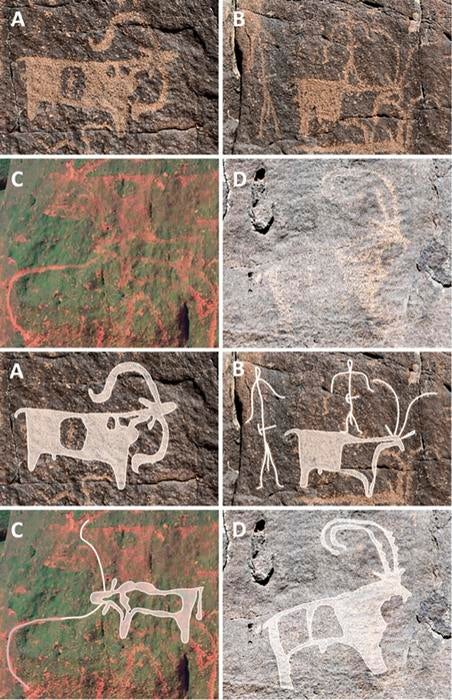Ancient humans hid in Saudi Arabian lava tube for over 7,000 years
Archeologists find artefacts, rock art and skeletal remains in Umm Jirsan
A lava tube in Saudi Arabia served as shelter to ancient humans for over 7,000 years, archaeologists have said in a new study.
While previous research established that Northern Arabia was a dynamic site of evolution and cultural development of ancient humans, the timing of their occupation and connection with the nearby Levant remained poorly understood, mainly due to poor preservation of organic remains in the arid conditions of the region.
Now, though, archaeologists are increasingly studying caves and underground settings in the region where ancient materials are sheltered from sun, wind and high fluctuations in temperature.
In the latest study, researchers assessed an archaeological site from a lava tube called Umm Jirsan located in the volcanic field of Harrat Khaybar in Saudi Arabia, about 125km north of Medina.
They found artefacts, rock art, and skeletal remains documenting repeated human occupation over the past 7,000 years at least.
Archaeologists suspect the lava tube could have been an important resource for pastoralists herding livestock based on rock art and animal bones found at the site representing domesticated sheep and goats.

“Our findings at Umm Jirsan provide a rare glimpse into the lives of ancient peoples in Arabia, revealing repeated phases of human occupation and shedding light on the pastoralist activities that once thrived in this landscape,” Mathew Stewart, a co-author of the study, said.
Researchers also found further evidence of the use of plants such as cereal and fruit in the diet, likely linked to a rise in oasis agriculture in the Bronze Age.
Analysis of remains found at the site suggests the livestock mainly grazed on wild grasses and shrubs, while the human inhabitants maintained a diet rich in protein.

The Umm Jirsan lava tube was likely not a permanent home, but a key stopping point for people travelling in a challenging environment between oasis settlements.
“This site likely served as a crucial waypoint along pastoral routes, linking key oases and facilitating cultural exchange and trade.” Dr Stewart said.
“These findings underscore the immense potential for interdisciplinary investigations in caves and lava tubes, offering a unique window into Arabia’s ancient past,” Michael Petraglia, another author of the study, said.
Join our commenting forum
Join thought-provoking conversations, follow other Independent readers and see their replies
Comments